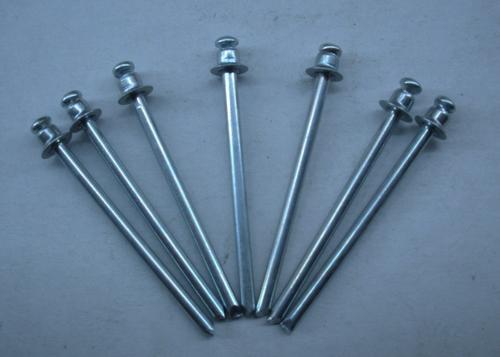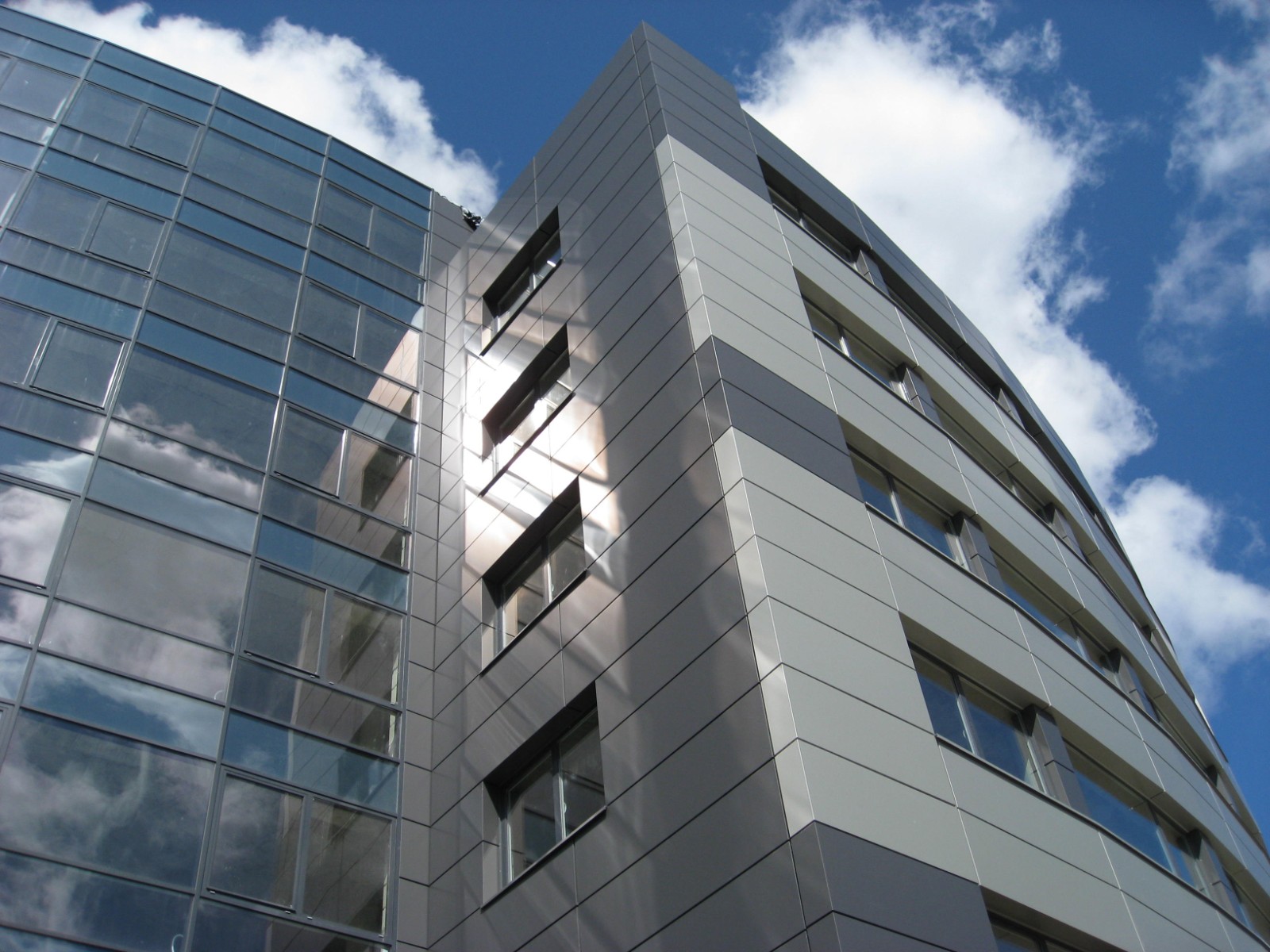The ACM panels can be connected by the common connection method of metal and plastic processing. Here are some common connection methods.
(1) Rivet connection
The rivets suitable for aluminum material can be used for the connection between plates or between plates and other materials. For outdoor or high humidity areas, stainless steel core pulling rivets should be used to avoid corrosion affecting the ACM panel surface. If the rivets of the core are used, the core must be pulled out after riveting connection. Countersunk rivets can only be used for indoor applications.
Rivet
(2) Threaded fastener--It can be divided into external use and indoor use
a. Outdoor fixings
When using threaded fasteners outdoors, the thermal expansion coefficient of the aluminum composite material panel shall be considered. In order to avoid extrusion deformation of ACM panels due to thermal deformation, the holes on the aluminum-plastic plate shall be larger than the screw diameter, so as to meet the requirements of expansion and expansion. Using stainless steel screw pattern with sealing washer can avoid the extrusion deformation of ACP. The function of this product has been verified. To select screws suitable for structural materials, use a torque wrench or a screwdriver to tighten the screws, so as to ensure that the gasket can effectively seal the opening, but it will not be too tight and leave traces on the surface of the aluminum plate. Sometimes it is necessary to drill holes on aluminum plate or substructure with deformed drill bit or casing to achieve the construction of centering drilling and riveting. It is important to ensure that the protective film is removed before fixing the screws.
b. Indoor fixings
The connection of indoor application can use different head shape steel plate or wood plate fixing screw. These screws generally do not allow thermal expansion displacement of the ACM panels. Countersunk head screws can be used to fix the aluminum composite material panels, and the normal countersunk head hole method can be used or the aluminum panel can be directly pressed into the plate. When doing this, the hole on the aluminum plate is larger than the diameter of the screw rod.
(3) Plastic welding (PE core only)
The welding between plastics by using hot air can be applied to the connection between aluminum-plastic plates. The electric heating welding gun is used to heat the polyethylene core layer of aluminum plate and polyethylene plastic electrode, and then connect them after cooling. The following are the conditions for obtaining good welding quality:
a. Well prepared board edge interface;
b. Clean hot air;
c. Correct welding temperature;
d. Correct contact pressure;
e. Welding speed.
(4) Bonding
Metal / general purpose adhesives are used for bonding. It is used for indoor advertising board and booth layout. Commonly used metal or common adhesives are suitable for bonding on composite material panels. Double sided tape is suitable for connection with low strength requirements. For applications requiring high strength bonding, we recommend the use of a single component adhesive.
It should be noted that the adhesive's ability to withstand static strength when used outdoors is just as good.
When the ACP is bonded with other materials, it may fail due to the different thermal expansion coefficient of the material.
Aluminum Composite Material Panels Application
(5) Connector connection
Generally, the combination clamp can also be used to fix and connect the aluminum composite material panels. The clamp can be made of aluminum material or plastic material, generally consisting of two parts and connected by screws.









